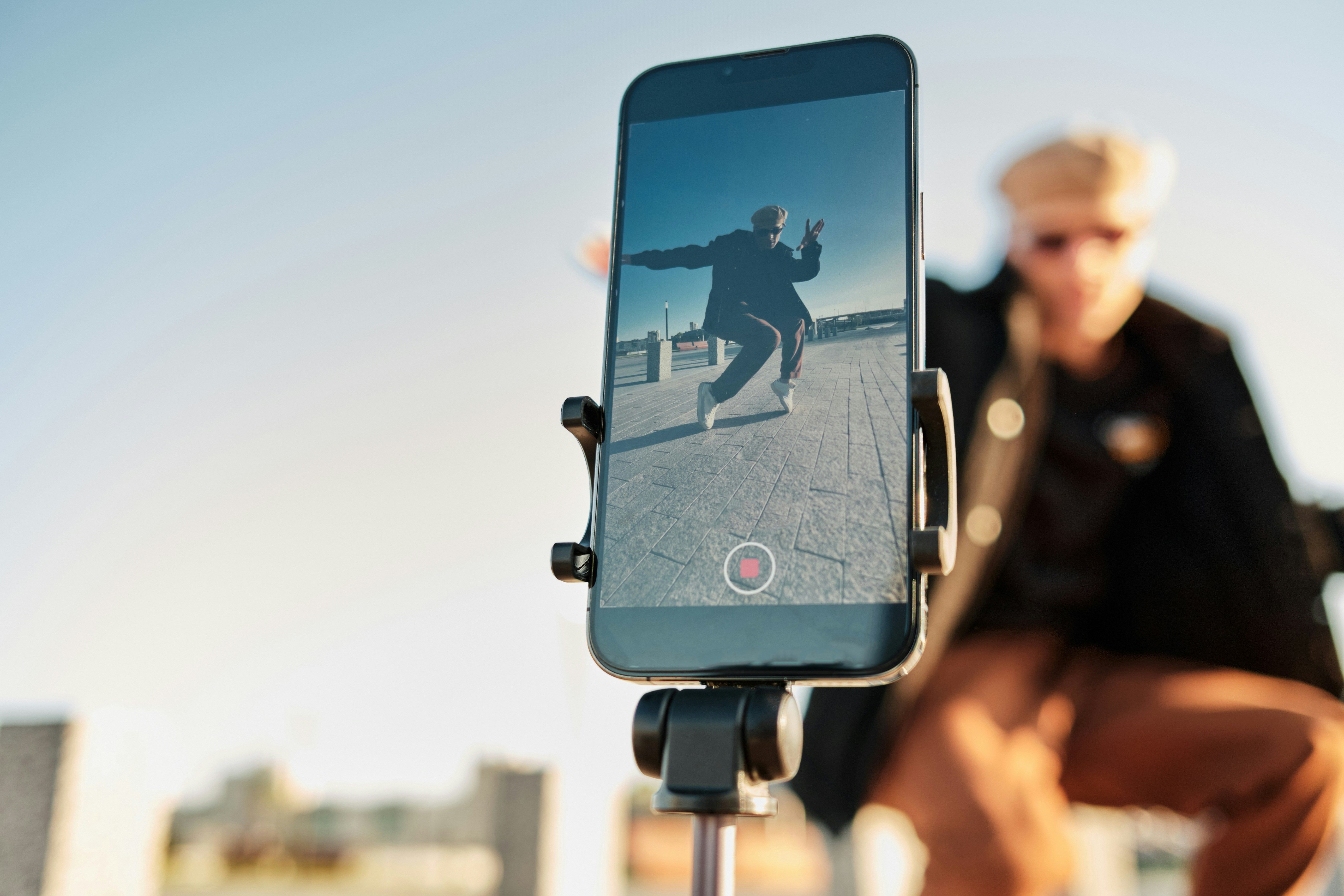A Complete Guide to Becoming a Micro Influencer

Paul Osas
5 min read

Who is a micro-influencer? A micro influencer is some one who connect deeply with niche audiences on social media.
No, it's not all about follower count.
You can become a micro influencer from as low as 1000 followers or more.
The key is to build strong, personal connections with your audience, which makes you highly relatable and trusted.
Brands love micro influencers for their authentic style and the high engagement rates they bring.
That's not all.
Here are other reasons why brands need more micro influencers:
-
Micro influencers share genuine experiences and opinions, which resonate well with their followers.
-
Their audience feels a personal connection, leading to more comments, shares, and likes.
-
Collaborations with micro influencers often cost less while delivering better ROI.
-
They focus on specific themes, allowing brands to reach precise market segments effectively.
So what exactly does it take to become a micro-influencer, and how can you turn your passion into profitable partnerships?
Let's walk you through the steps.
Step 1: Find Your Niche (Where Passion Meets Audience Need)
Specificity is your superpower.
Being known for something specific wins over being "pretty good" at everything.
So find your niche.
Your niche is the specific topic or area you'll focus on.
Does choosing a niche mean you can't talk about other things you love?
NO.
It just means you share about your niche 80% of the time and other things 20%.
That way you attract a dedicated audience genuinely interested in your 80% content.
This makes you stand out, and clarifies your value proposition to potential brand partners.
How to find your niche
- Brainstorm your passions
What are you genuinely passionate about? What could you talk about endlessly?
What unique skills or experiences do you have?
- Identify problems you solve
Are you offering entertainment, education, inspiration?
What problems do you help solve for a specific group of people? (e.g., sustainable fashion on a budget, simplifying vegan recipes, navigating freelance life).
- Research the market
Who are the top micro-influencers in that space? Where are the gaps? What unique perspective can you bring?
- Validate your niche
Ask yourself: Is there an existing, engaged audience for this topic? Are there brands already investing in this niche? Can you sustainably create content around it?
You should also go technical by using Google Trends to check search volume, analyze competitors’ top posts with TikTok Creative Center.
Step 2: Know Your Audience Deeply
You can't connect authentically if you don't know who you're talking to.
Go deeper than just age and location.
Understand their interests, values, challenges, aspirations, and online behaviour (psychographics).
Create an ideal follower persona.
Give your target audience member a name and profile – it makes content creation more focused.
Outline age, interests, values, problems, and desires. Tailor your content to serve this persona
-
Analyze competitors' audiences: See who follows them and engages.
-
Engage in niche communities: Subreddits, Facebook groups, forums.
-
Use platform insights: Instagram Insights, TikTok Analytics, YouTube Studio.
Step 3: Choose Your Platforms & Optimize Your Profile
You don't need to be everywhere, but you need to be where your audience is.
The first thing to think about is, where does your target audience hangout?
Instagram, TikTok, and YouTube are popular choices, but don't discount Pinterest (visual niches), blogs (in-depth content), or even LinkedIn (professional niches).
Here's a look at what each platform is best for:
-
Instagram: Visual storytelling, brand aesthetics, reels.
-
TikTok: Short-form video, raw authenticity, virality potential.
-
YouTube: Long-form value-driven content, strong searchability.
-
Pinterest: Evergreen content, tutorials, DIY, lifestyle inspiration.
-
Blogs: SEO authority, email list building.
Start with 1-2 primary platforms.
How to Optimize your Profile
Write a clear, keyword-rich bio. Make it clear who you are, what you talk about, and who you serve.
Include relevant keywords, a call-to-action (e.g., "Follow for daily tips"), and a link strategy (using tools like Linktree or Beacons to house multiple links).
Also choose a colour palette, fonts, and overall aesthetic that reflects your niche and personality.
Add a profile photo and if you can a pinned video or photo that explains who you are and what your content is about.
This way when someone lands on your profile they know exactly who you are and what you're about.
And of they like and want to see more of your content, they'll follow you.
Step 4: Create Scroll-Stopping, Authentic Content That Resonates
Content is the heart of your influence.
Develop a Content Strategy & Calendar
Plan your content around key themes (content pillars) relevant to your niche. Decide on a realistic posting frequency and try to stick to it.
Content Formats That Work
Experiment with videos (tutorials, reviews, tips, vlogs), high-quality photos, informative carousels, engaging Stories (polls, Q&As), blog posts, and user-generated content (UGC)-style posts. Storytelling is powerful.
Pro Tip: Here are some top performing content formats
-
TikTok/Reels - Before/After Videos for example "My 30-Day Glow-Up with [Product]"
-
Instagram - Carousel Tutorials. Example: "5 Ways to Style This $20 Dress"
-
YouTube - Unboxing + Demo Example: "Testing a Viral Skincare Device"
-
UGC-style posts that look natural, not overly produced.
Prioritize Quality & Authenticity
Aim for good lighting and clear audio/visuals, but don't let perfectionism stop you.
Your genuine voice and perspective are your greatest assets. Share your real experiences.
Pro Tip: Free tools to elevate your content quality
-
Creation: Canva (graphics), CapCut or Captions AI (video editing), Lightroom Mobile (photo editing).
-
Scheduling: Meta Business Suite (Facebook/Instagram), Later, Buffer.
-
Link Management: Linktree, Beacons.
Read more about the best apps for content creators.
Step 5: Grow Your Audience Organically
Influence is about connection. Engagement is a two-way street.
Don't just post and ghost.
Respond to comments and DMs promptly and thoughtfully. Ask questions in your captions and stories to encourage interaction.
Actively grow a community:
-
Go Live to chat in real-time.
-
Use interactive features like polls and quizzes in Stories.
-
Encourage followers to share their own experiences using a unique hashtag.
-
Shout out engaged followers.
Collaborate with peer influencers.
Network with others in your niche for cross-promotion and shared learning.
But you must avoid these growth-killing mistakes:
-
Buying followers (brands check engagement rates).
-
Ignoring SEO (optimize bios with keywords like "Skincare Micro-Influencer").
-
Not replying to comments as quickly as possible (within 2hrs is ideal)
Step 6: Master the Business Side of Influence
To make your influence sustainable, you need to treat it like a business.
Shift your mindset. You're a business, not "just a creator."
Treating your influence like a business involves professionalism, tracking, and understanding monetization.
Here are ways to monetize your influence:
-
Sponsored posts, dedicated videos, campaign participation. (More on this in Step 7!)
-
Earning commission by promoting products/services using unique trackable links (e.g., Amazon Associates, brand-specific programs).
-
Consider selling your own digital products (eBooks, guides, presets), physical products, or offering services (coaching, consulting) as you grow.
Create a Killer Media Kit
A media kit is your influencer resume. It should include:
-
A brief introduction to you and your niche.
-
Key stats (follower count, engagement rate, reach – provide context!).
-
Audience demographics (age, location, interests – pull from analytics).
-
Examples of past work or high-performing content (case studies if possible).
-
Your service offerings/packages and starting rates.
Pricing your influence
This is tricky! Factors include:
-
Your engagement rate (highly important!).
-
Reach and audience quality.
-
The scope of work required (number of posts, type of content, exclusivity).
-
Usage rights the brand requires (can they reuse your content?).
-
Your niche's demand. Research industry benchmarks, but value your work.
You'll also get some insights from how to price UGC Content
Understanding Contracts & Legals
Always have a contract. Important clauses to consider are:
-
Deliverables: Exactly what content you'll create, where, and when.
-
Exclusivity: Are you prevented from working with competitors? For how long?
-
Usage Rights: How can the brand use your content (their social media, website, paid ads)? For how long? This significantly impacts price.
-
Payment Terms: Amount, payment method, and when you'll be paid (e.g., Net 30, upon completion).
-
FTC Disclosures: Non-negotiable! Clearly disclose paid partnerships using #ad, #sponsored, or built-in platform tools. Be transparent – place disclosures prominently (e.g., beginning of caption/video). Failure to do so can lead to penalties.
-
Getting Paid: Use simple invoicing tools (Wave, PayPal Invoicing, dedicated software) to look professional and track payments.
Step 7: Partnering Effectively with Brands (The Pitchbrand Advantage)
This is where your influence translates into income, but successful partnerships require strategy.
Finding the Right Brand Partners
Don't just chase any deal. Partner with brands whose products, values, and audience genuinely align with yours.
Authenticity matters most.
You'll find this guide on how to find brand emails super useful.
How to Pitch Brands Professionally
Do your research – understand the brand and their marketing. Personalize your pitch – explain why you're a good fit for them.
Highlight your value – reference your audience, engagement, and unique perspective.
Have a clear ask – propose a specific collaboration idea.
Attach your media kit.
Here are some of the best pitch templates to consider.
For example:
Subject: [Your Niche] Creator for [Brand]’s [Product]
Hi [First Name],
I’ve been using [Product] for [Time]—it’s transformed my [Specific Result]. As a [Niche] micro-influencer, my audience loves [Related Interest].
Here’s what I can offer:
- 3 TikTok/Reels (see sample: [Link])
- 2 Instagram Story takeovers
- A 7-day posting plan
My recent campaign for [Similar Brand] drove [Metric: e.g., 50K impressions]. Let’s chat!
Best,
[Your Name]
[Media Kit Link]
Subject: [Your Niche] Creator for [Brand]’s [Product]
Hi [First Name],
I’ve been using [Product] for [Time]—it’s transformed my [Specific Result]. As a [Niche] micro-influencer, my audience loves [Related Interest].
Here’s what I can offer:
- 3 TikTok/Reels (see sample: [Link])
- 2 Instagram Story takeovers
- A 7-day posting plan
My recent campaign for [Similar Brand] drove [Metric: e.g., 50K impressions]. Let’s chat!
Best,
[Your Name]
[Media Kit Link]
What Brands Really Look For
-
Alignment**:** Does your content and audience fit their brand?
-
Engagement Quality**:** Not just numbers, but genuine interaction.
-
Professionalism**:** Clear communication, meeting deadlines, reliability.
-
Content Quality**:** Fits their brand aesthetic and campaign goals.
-
Understanding Briefs**:** Ability to follow campaign guidelines while maintaining your voice.
-
Reporting**:** Providing insights on content performance.
Negotiating & Managing Expectations
Be prepared to discuss rates, deliverables, and usage rights.
Communicate clearly throughout the campaign.
Reliability, strong results, and good communication can turn one-off campaigns into ongoing partnerships.
But finding aligned brands and managing campaigns can be time-consuming.
Platforms like Pitchbrand.co offers database of brands hiring micro influencers you can pitch to right away.
Step 8: Track Your Progress, Refine Your Strategy
You can't improve what you don't measure.
Metrics to Monitor
Engagement Rate**:** (Likes + Comments + Shares) / Followers * 100% (aim for above 2-3% generally, higher in some niches).
Reach & Impressions**:** How many unique people see your content vs. total views.
Website Clicks**:** Track clicks on links in bio or stories (using UTM parameters for detailed tracking).
If using affiliate links or promo codes, track sales/sign-ups. Regularly check your Instagram Insights, TikTok Analytics, etc.
For some campaigns, brands might share results (e.g., sales from your code).
See what content resonates most, what platforms perform best, and adjust your strategy accordingly.
Start Your Journey as an Authentic Micro-Influencer Now
With the insights shared here, you don't need any new information.
Take the steps covered here and you'll use your unique passion and perspective to build a genuine connection with a dedicated community.
It requires strategic planning, consistent effort, authentic content creation, and business savvy.
Focus on your niche, understand your audience, create valuable content, nurture your community, and approach partnerships professionally.
You'll carve out your space and make a real impact.


